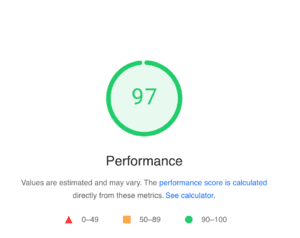“`html
Unlock Enterprise-Level App Success with Flutter Development Strategies
In today’s rapidly transforming digital ecosystem, enterprises are constantly seeking robust solutions to build scalable and high-performance applications. Flutter, Google’s open-source UI development toolkit, is emerging at the forefront, offering innovative strategies for developing enterprise-level apps. With its ability to craft visually appealing, natively compiled apps from a single codebase, Flutter has gained attention across industries. Let us delve into how leveraging Flutter can steer enterprises toward digital success.
The Rising Popularity of Flutter for Enterprise Development
Flutter’s rise is fueled by its commitment to reducing complexity in application development and enhancing user experiences. As businesses aim for faster time-to-market and cost-effective development, Flutter emerges as a game-changer.
Why Enterprises Are Choosing Flutter Over Other Frameworks
- Single Codebase for Multiple Platforms: Streamline development efforts and reduce costs by using a single codebase for both iOS and Android applications.
- Rich Set of Pre-Built Widgets: Tailor engaging and responsive UI effortlessly with Flutter’s extensive collection of pre-designed widgets that leverage platform conventions.
- Faster Development Cycles: Experience accelerated app development processes with Hot Reload, allowing developers to instantly view code changes without restarting the app.
- Seamless Integration Capabilities: Connect effortlessly with existing enterprise solutions and systems, making it easier to integrate with various APIs and third-party libraries.
Strategizing for Success with Flutter Development
Successfully deploying an enterprise app with Flutter goes beyond just choosing the framework. It involves a strategic approach that aligns with organizational goals and harnesses Flutter’s potential effectively.
1. Define Clear Objectives and Performance Metrics
Begin with a well-outlined plan that highlights your app’s objectives and sets realistic performance metrics. This strategic direction will drive your development process efficiently. Regular performance tracking and analysis with tools like Google Analytics can provide insights into user behavior and areas requiring improvement.
2. Focus on User Experience Design
Your app’s success hinges on its ability to engage users. Employ Flutter’s customizable widgets to design intuitive and user-friendly interfaces. Conduct user testing early in the design phase to ensure that the app meets user expectations and enhances satisfaction.
3. Prioritize Security and Compliance
Enterprise applications often deal with sensitive data, demanding stringent security measures. Leverage Flutter’s capabilities by integrating advanced security protocols and ensuring compliance with industry standards, such as GDPR or CCPA. Regular security audits are critical to safeguarding user data and maintaining trust.
4. Optimize for Scalability and Performance
Flutter’s architecture supports pushing the boundaries when it comes to handling increasing user demands. Optimize your app’s backend and frontend components using establish performance-testing tools. This will ensure seamless scale-up capabilities while maintaining high performance and reliability.
5. Implement Rigorous Testing Practices
Testing is imperative for the seamless operation of enterprise apps. Utilize Flutter’s extensive testing framework to conduct unit, widget, and integration tests throughout the development lifecycle. Automated testing strategies can further enhance testing efficiency and app quality.
6. Foster Continuous Improvement and Updates
The digital landscape is dynamic, and so should your enterprise app be. Continuously respond to user feedback and technological advancements by rolling out timely updates. Post-launch performance monitoring can drive strategic enhancements, ensuring your app remains relevant and competitive.
Measuring the Impact of Flutter on Enterprise Applications
Flutter’s impact on enterprise applications is evident through enhancement in development efficiency, user engagement, and overall business performance.
Enhanced Development Efficiency
With a single codebase, enterprises save significant development resources, enabling rapid launches and updates. The ability to focus on one development and QA cycle dramatically reduces costs and time.
Superior User Engagement
Engage users through personalized experiences crafted with Flutter’s extensive customization options. Rich Interactions, smooth animations, and aesthetic UIs contribute to superior user engagement and retention.
Increased Business Agility
Flutter enables enterprises to keep pace with evolving market trends and consumer demands. Its flexibility and integration capabilities empower businesses to pivot swiftly and seize new opportunities.
Conclusion: Flutter is the Future for Enterprise Apps
Flutter stands as a beacon of innovation and efficiency in enterprise app development. By adopting robust Flutter strategies, businesses can unlock unparalleled success, merging technological prowess with user-centric designs. As enterprises continue to adapt to an ever-evolving digital economy, Flutter’s role as a pivotal development framework is only set to grow. Step into the future, ensure competitiveness, and deliver value-driven applications by fostering Flutter in your enterprise development endeavors.
“`




